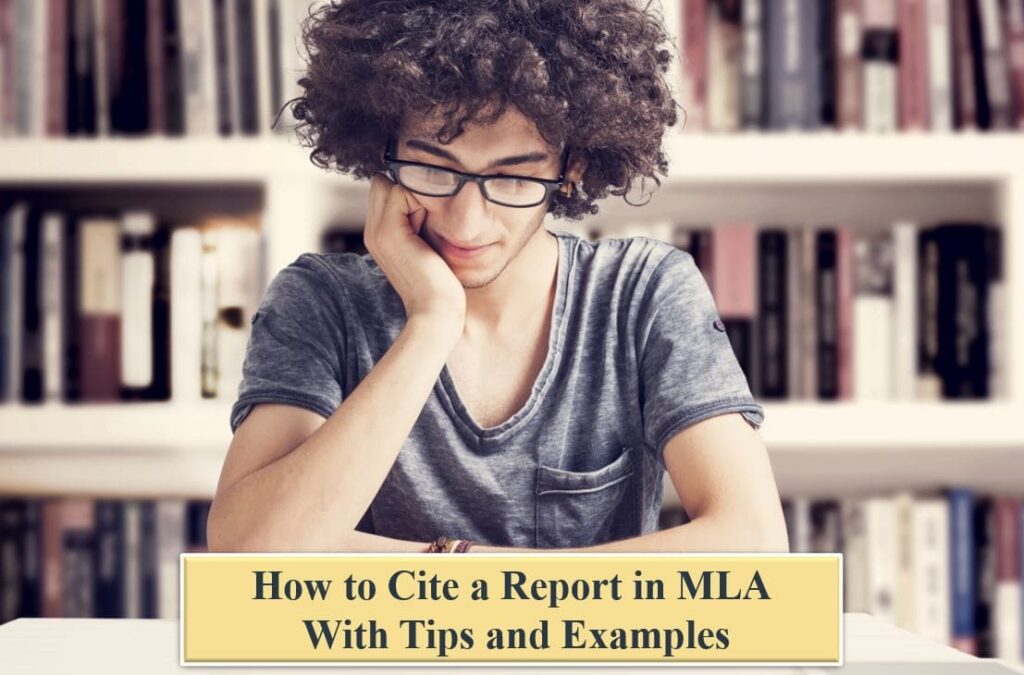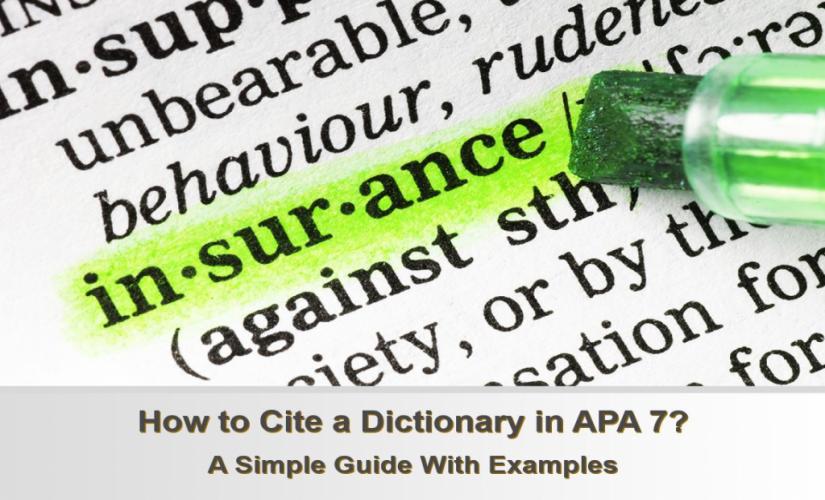Reports are credible sources that identify and examine specific issues, events, or findings that happened in a physical sense. In most cases, organizations, governments, and individuals write reports concerning particular subjects. Basically, organizations create stories to provide additional details about specific events or issues. In this case, researchers prepare documents that contain findings from their investigations, while such sources can be used for academic papers written in an MLA format. Then, credible documents inform scholars who read about relevant topics simply and objectively. Moreover, such details show that companies release formal reports, which must follow a predefined structure and contain independent sections that lead to unbiased conclusions. However, free announcements do not follow a specific guideline. They focus on communicating essential details to a predefined audience. In turn, reports differ from research articles because they contain details of an event or incident. Also, authors recount and describe a contest and give a balanced conclusion, relating to covered issues. In particular, research articles contain facts that contribute to a body of knowledge in a specific area. Hence, this guide on how to cite a report in MLA 9 includes particular guidelines that writers must follow when using such sources.
General Guidelines for Citing a Report in MLA 9
A report refers to a specific form of writing that identifies and examines particular issues, events, or findings that happened in a physical sense. Basically, an excellent example is where an event occurs within an organization. In this case, different institutions create scientific reports on investigated occasions. At other times, researchers make reports that contain findings from their investigations. Moreover, reports inform readers about relevant issues simply and objectively. In turn, these documents follow a predefined structure and include independent sections that lead to unbiased conclusions. As a result, students need to learn how to cite a report in MLA 9 to maintain academic knowledge.

Difference in Reports
Reports have distinct differences when compared to research articles. For example, a report refers to details of an event or incident that can be used for citing evidence when writing academic papers in the MLA format. In this case, authors recount and describe specific situations and give balanced conclusions, relating to issues. On the other hand, a research article contains facts that contribute to a body of knowledge in a specific area. Also, writers can find credible sources published in peer-reviewed scholarly journals from a particular academic field. In turn, unscholarly sources do not provide a balanced determination on an underlying issue. Instead, authors of such articles leave biased conclusions that reveal a knowledge gap.
Citing Articles as Reports in MLA 9
Students should cite an article as a report in MLA 9th edition. As a rule, such an activity requires one to obtain adequate bibliographic details for a scholarly report. In this case, one should consider some of the features that should include author, title, report number, publisher, publication date, URL, and access date. Also, authors identified may be an individual or a corporation. In turn, the URL and time of access apply to articles and reports obtained from websites. As a result, getting these details makes the article’s citation credible.
11 Types of Reports
Learners can obtain evidence from different kinds of reports to support their arguments when citing such sources in MLA 9. Hence, the most common types of reports that one may access are:
- Internal and external reports – Internal reports travel within an organization. In this case, various departments exchange these reports for domestic purposes. Also, external reports remain applicable for use outside an organization. In turn, an institution creates reports for the general public and customers.
- Vertical and lateral reports – Vertical reports represent a specific direction of information flow. Basically, these reports move upwards or downwards organizational hierarchies. In turn, oblique stories travel the same corporate level. For instance, managers in a department may create reports for the company’s members. Hence, such documents help to correlate work throughout organizations.
- Periodic reports – Organizations release reports periodically and at regular intervals. Basically, such announcements contain details about business preleases reports regularly and at regular intervals. Moreover, such statements provide information on the business performance within the specified duration. In turn, some organizations that release periodic reports include federal agencies, corporations, and non-profits. Also, incident, sales, feasibility, and progress reports are excellent examples of regular information published by organizations.
- Statutory reports – Laws require companies to submit compulsory reports on financial performance. In this case, each company must submit such reports to specific government agencies. Besides, such documents must follow concrete structures and rules set by specific governments.
- Non-statutory reports – Law regulations do not provide guidelines for submitting non-statutory reports. However, employees offer these reports to their employers for administrative use.
- General and confidential reports – Business can prepare either regular or confidential reports. Basically, firms release everyday statements to the press or public. However, essential individuals in institutions use confidential reports.
- Annual reports – Organizations release reports yearly. In this case, yearly announcements contain data on sales and profits. Moreover, firms release these documents at the end of the year for decision-makers to study and make the necessary plans.
- Informal reports – Companies prepare reports that follow casual and formal styles. In this case, they do not rely on adequate planning when preparing unofficial reports. Besides, firms use these documents for internal operations. In turn, excellent examples include memos and letters.
- Informational reports – These documents contain information, facts, and data relating to a specific subject. However, informational reports do not provide evaluation, recommendations, and conclusions. Hence, some examples of informational statements include meeting minutes, and expense and progress report.
- Analytical reports – These documents resemble informational reports. However, they include the analysis of problems and provide possible and viable solutions. In this case, some good examples include audit, feasibility, justification, and closure reports.
- Technical Reports – Scientists prepare technical reports, which explain the processes and progress of some experiments. Besides, other experts make feasibility reports, business plans, and scientific research.
Citing Rules for a Report in MLA 9
Various reports contain credible information that one may use to support specific arguments. Basically, a writer must cite all the quotes, paraphrases, or summaries that relate to a particular subject from a report in MLA 9. Hence, basic guidelines that one must follow when citing reports in MLA 9 are:
1. Credentials Needed
Credible reports must have the following credentials:
- Author or corporate author
- Title
- Report number
- Publisher
- Publication date
- URL and access date (applicable for reports retrieved from the Internet)
2. Citing a Report in MLA 9 When the Author(s) and Publisher are Similar
Some institutions prepare and publish reports that contain corporate authors. In this case, one should use the publisher as the author. Hence, an example of a citation of a report prepared by a corporate author.
Works Cited entry for a report in MLA 9:
- Author or Publisher. “Title of the Report.” Year of Publication.
- United States Securities and Exchange Commission. “Annual Report 2018: Apple, Inc.” 2018.
In-text citations for a report in MLA 9:
- In-text citations should follow the scheme (Author Page).
- The actual quotation is (United States Securities and Exchange Commission 1).
From the example above, the United States Securities and Exchange Commission is the author and the publisher of a cited report in MLA 9. Basically, the corporate author should appear as in full and not in initials. However, one may use initials when presented in a paper. In turn, students should enclose the title inside rounded brackets. Besides, a period should separate all the relevant details included in the title.
3. Citing an Official Report From the Government and Organization in MLA 9
MLA citations for a report prepared by an organization or government should contain adequate bibliographic details. For instance, one should use the government’s or organization’s name as the author. Then, titles of reports should appear inside double quotation marks. Then, all the essential words in such titles must begin with capital letters. For reports obtained from websites, one should include the database’s name in the italicized form and the relevant URL link. Hence, examples of MLA citations for reporting documents created by an organization and government, respectively.
Works Cited entries for an official report from an organization and government in MLA 9:
- Organization’s Name. “Report’s Title.” Website, Year, URL. Accessed Day Month. Year.
- Competition Bureau of Canada. “Highlights from the Competition Bureau’s Workshop on Emerging Competition Issues.” Competitionbureau.gc.ca, 2020, www.competitionbureau.gc.ca/eic/site/cb-bc.nsf/vwapj/cb-Workshop-Summary-Report-e.pdf/. Accessed 19 Aug. 2020.
- Government’s Name. “Report’s Title.” Website, Year, URL. Accessed Day Month. Year.
- The United States. “Vietnamese Amerasian Resettlement: Education, Employment, and Family Outcomes in the United States.” Govinfo.gov, 1994, www.govinfo.gov/content/pkg/GAOREPORTS-PEMD-94-15/html/GAOREPORTS-PEMD-94-15.htm. Accessed 19 Aug. 2020.
In-text citations for an official report in MLA 9:
- In-text citations for the first example of a report in MLA 9 should be (Competition Bureau of Canada 1).
- In-text citations for the second example of a report in MLA 9 should be (The United States 1).
4. Citing an Annual Report in MLA 9
Companies publish annual reports that contain their performances for a specific financial year. In most cases, organizations announce their releases. Basically, one should use corporate authors when preparing citations for a report in MLA 9. Then, other essential details include publication year for reports available in print form. Otherwise, one should provide the URL and date of access. Hence, a citation for Amazon’s annual report, which is available in print form, is:
- Organization. “Title of the Annual Report.” Publication Date.
- Amazon. “Annual Report for 2018 Financial Year.” 2018.
- In-text citations should appear as (Amazon 1).
5. Citing Workplace Reports in MLA 9
Organizations prepare workplace reports that provide data on the workforce. Basically, workplace reports help managers to understand their employees and establish effective human resource management practices. In this case, such details in report documents include workforce characteristics, trends, and other information required by managers. Then, students may obtain evidence on employee trends in areas, like employment, turnover, age, length of service, retirement eligibility, diversity, leave, and compensation. In turn, MLA citations for workplace reports should identify the author, the title and relevant organization, database, URL link, and access date. Hence, citations for workplace reports prepared by individuals, task force, and project groups are:
For a report released by a task force, one should follow the scheme and example below:
- Task Force. “Report’s Title.” Database, Publication Years, URL. Accessed Day Month Year.
- Economic Graph Team. “March Workforce Report 2020.” Economicgraph.linkedin.com, 2020, economicgraph.linkedin.com/resources/linkedin-workforce-report-march-2020. Accessed 19 Aug. 2020.
- In-text citations – (Economic Graph Team 1).
For a report released by a project group, scholars should create an MLA citation that follows a guideline below:
- Project Group. Report’s Title. Organization, Publication Date.
- Gallup. State of the American Workplace. Gallup, Inc., 2017.
- In-text citations should be (Gallup 1).
For a report created by individuals, writers should create an MLA citation by using the scheme and example listed below.
- Surname, First Name A., and First Name B. Surname. Report’s Title. Organization, Publication Year.
- Scott, Philip B., and Beth Fastiggi. State of Vermont Workplace Report: Fiscal Year 2019. The State of Vermont, 2019.
- In-text citations should appear as (Scott and Fastiggi 1).
From the examples provided above, one should take note of the order of the author’s name. Basically, the name of the first author must follow an inverted form, where it begins with the surname followed by the first name. However, the names of the second author must track the ordinary order. For a report with three or more authors, one should use the phrase “et al.” As a rule, writers should state the first author’s surname and the first name followed by the words.
6. Citing a Press Release in MLA 9
Governments release essential details through the media in the form of the press release. When citing such a report in MLA 9, one should identify adequate bibliographic information for a press release. In this case, some of the features include the title of the press and the publication details. However, such details may change depending on the press release’s form.
Citation for a printed press release should contain the title and the organization. Basically, titles should appear inside rounded brackets. Then, a period should follow the source’s entry. Moreover, other details should include the publication date and the term “Press release” at the end of the bibliographic entry. In turn, the organization’s name should appear in italicized forms. Besides, a comma should separate the date and the organization’s name.
- “Press Release’s Title.” Organization, Day Month. Year. Press release.
- “Governments Commit to Shared Climate Action through the Least Developed Countries Fund.” Global Environment Facility, 26 Sept. 2019. Press Release.
- In-text citations should be (“Governments Commit to Shared Climate Action through the Least Developed Countries Fund” 1).
Students may obtain the press release from a website. In this case, one should include the URL link that leads to the specific report. Moreover, when citing such type of report in MLA 9, the URL should appear between the date and the term “Press release.” In turn, one should use a comma to separate these details.
- “Press Release’s Title.” Organization, Day Month. Year, URL. Press release.
- “Governments Commit to Shared Climate Action through the Least Developed Countries Fund.” Global Environment Facility, 26 Sept. 2019, www.thegef.org/news/governments-commit-shared-climate-action-through-least-developed-countries-fund. Press release.
- In-text citations should be (“Governments Commit to Shared Climate Action through the Least Developed Countries Fund” 1).
Writers may obtain press releases from specific databases. In this case, citations should include particular containers that relate to a specific source. Hence, the scheme and actual citation of the press release downloaded from a database will look like:
- “Press Release’s Title.” Organization, Day Month. Year. Container 1, Container 2, URL. Press release.
- “Climate Action Summit to Provide Solutions for Increasing Energy Efficiency and Sustainable Cooling in a Warming World.” United Nations, 23 Sept. 2019. Climate Action Summit 2019, United Nations, www.un.org/en/climatechange/press-materials.shtml. Press release.
- In-text citations should be (“Governments Commit to Shared Climate Action through the Least Developed Countries Fund” 1).
Summing Up on How to Cite a Report in MLA 9 Correctly
Reports refer to specific forms of writing that identify and examine particular issues, events, or findings that happened in a physical sense. In most cases, organizations, governments, and individuals write reports concerning specific subjects. Basically, different institutions create such reports to provide more details about a particular event. At other times, researchers prepare documents that contain findings from their investigations. Hence, reports inform readers about relevant issues simply and objectively. Then, formal reports released on an annual basis should follow a predefined structure and include independent sections that lead to unbiased conclusions. Moreover, reporting documents differ from research articles because they contain details of an event or incident. In turn, authors recount and describe an occurrence and give a balanced outcome relating to a particular issue. In turn, a research article contains facts that contribute to a body of knowledge in a specific area.
Tips
Specific guidelines that one should follow when citing reports in MLA 9 are:
- Students must cite all the quotes, paraphrases, or summaries related to a particular subject presented in a report.
- Credible citations in MLA 9 should contain details, like the author, title, report number, publisher, publication date, URL, and access date.
- Writers should use either individual or corporate authors when citing reports.
- All the essential words in the title must begin with capital letters.
- For reports obtained from websites, scholars should include the database’s name in the italicized form and the relevant URL link.
- Writers should include the URL link that leads to the specific report or press release.
- Credible citations for reports available online should include the date when students access them.
- Citation for a printed press release should contain the title and the organization.
- For press releases obtained from specific databases, one should include distinct containers that relate to the source.


